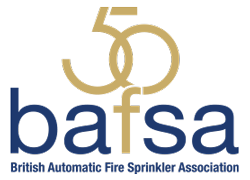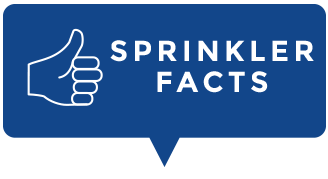There is a need for strict adherence to published standards, not only in respect of the manufacture of components but also for the design and installation of the systems themselves
TECHNICAL STANDARDS
One of the most significant differences between automatic fire suppression systems and other building components is the need for strict adherence to published standards, not only in respect of the manufacture of components but also for the design and installation of the systems themselves.
The standards, increasingly EN (or European Norms) are based on many years’ actual experience of real-life fire incidents and are robust and balanced as the committees which draft these represent all parties including insurers, manufacturers, end-users, installers and regulators.
In the UK, the British Standards Institution (BSi) is the responsible body for all UK standardisation work. In respect of fire safety matters and equipment, responsibility rests with the various committees set up to develop national (ie BS) standards and to shadow the work being undertaken in Europe. Note that membership of the EU is not a prerequisite for membership of CEN.
Before 1997, in the UK the principal route to guaranteeing technical compliance for sprinkler system components was via the FOC (Fire Offices Committee) and then LPCB (Loss Prevention Certification Board). These bodies developed technical standards for components (for example sprinkler heads) and then invited manufacturers to submit their products for testing. Compliant products were then listed in the LPCB’s Red Book. This process is still available and it’s possible to verify the compliance of a product via Red Book Live.
BS 9252:2011 Components for residential sprinkler systems. Specification and test methods for residential sprinklers.
When an EN standard with the same coverage as an existing BS document is published, the BS document has to be withdrawn. So BS 9252 covering sprinkler heads for residential and domestic use will have to be withdrawn when EN 12259-14 is published, probably in 2017 unless the UK Government can justify retaining the BS for legal reasons.
The following standards are now available for use or are in the process of being developed:
- BS EN 12259-1: 1999 Fixed firefighting systems. Components for sprinkler and water spray systems. Sprinklers
- BS 12259-2:1999 Fixed firefighting systems. Components for sprinkler and water spray systems. Wet alarm valve assemblies
- BS EN 12259-3:2000 Fixed firefighting systems. Components for sprinkler and water spray systems. Dry alarm valve assemblies
- BS EN 12259-4:2000 Fixed firefighting systems. Components for sprinkler and water spray systems. Water motor alarms
- BS EN 12259-5:2002 Fixed firefighting systems. Components for sprinkler and water spray systems. Water flow detectors
- prEN 12259-9 Fixed firefighting systems – Components for sprinkler and water spray systems – Deluge alarm valves (Draft)
- BS 12259-10:1999 Fixed firefighting systems. Components for sprinkler and water spray systems. Multiple controls (Not yet published)
- BS EN 12259-11:2000 Fixed firefighting systems. Components for sprinkler and water spray system. Medium and high velocity water sprayers (Not yet published)
- prEN 12259-12: Fixed firefighting systems. Components for sprinkler and water spray systems. Pumps (draft)
- prEN 12259-13 Fixed firefighting systems. Components for sprinkler and water spray systems. Pumpsets (draft)
- prEN 12259-14 Fixed firefighting systems – Components for sprinkler and water spray systems – Part 14: Sprinklers for residential applications (Draft)
Sprinkler systems for industrial and commercial premises should be designed and installed in accordance with BS EN 12845:2015 Fixed firefighting systems. Automatic sprinkler systems. Design, installation and maintenance. This standard has recently been updated but is also currently undergoing a major review by CEN WG5/TG2.
However, there are an additional set of requirements in the UK which may be imposed on the design and installation of such systems by insurers. These are the LPC Rules for Automatic Sprinkler Installations 2015. The Rules combine the full text of BS EN 1284 2015 with 30 additional Technical Bulletins reflecting specific additional requirements. The LPC Rules are only available from the Fire Protection Association.
The LPC Rules contain other useful documents covering such topics as the risks of and from Legionella in sprinkler systems.
As far as automatic fire suppression systems using water are concerned, the principle UK committees are:
FSH/18 is responsible for the co-ordination, drafting and maintenance of standards for fixed firefighting systems and co-ordinating input to work in CEN/TC191 and ISO/TC21
FSH/18 oversees all matters concerned with fixed firefighting systems including water, gas powder and foam-based systems
FSH/18/2 Under the direction of FSH/18 is responsible for UK input into CEN/TC191/WG5 and ISO/TC21/SC5 and for the drafting and maintenance of BS 9251, BS 9252 and new national work on sprinklers.
FSH/18/5 Under the direction of FSH/18, will consider developments in the emerging UK watermist firefighting industry. It will address the needs for Standardisation in order to ensure effective and safe water mist firefighting systems can be specified and delivered through adoption of industry best practice and will also review and contribute to CEN Water Mist Standardisation.
CEN is the European Committee for Standardisation. It is an association that brings together the National Standardisation Bodies of 33 European countries. CEN is one of three European Standardisation Organisations (together with the European Committee for Electrotechnical Standardisation (CENELEC) and the European Telecommunications Standards Institute (ETSI)) that have been officially recognised by the European Union and by the European Free Trade Association (EFTA) as being responsible for developing and defining voluntary standards at European level. Note that membership of the EU is not a prerequisite for membership of CEN.
CEN provides a platform for the development of European Standards and other technical documents in relation to various kinds of products, materials, services and processes
TC 191 is responsible for drafting the standards for fixed fire fighting equipment and covers the same areas as BS FSH/18. The TC is subdivided into Working Groups (WG’s). WG5 covers sprinklers, WG5 is subdivided into Task Groups (TG’s) so TG1 covers components, TG2 is responsible for the installation standard for industrial and commercial sprinklers and TG4 the standard for the installation of residential sprinkler systems. WG10 covers water mist standards.
Other standards may be used in the UK and Ireland are:
NFPA 13:2016 Standard for the Installation of Sprinkler Systems
FM Global Datasheets: Installation Guidelines for Automatic Sprinklers
CEA 4001 (2013) Sprinkler Systems – Planning and Installation
In the UK, sprinkler systems in residential and domestic premises should be installed in accordance with BS 9251:2014 Fire sprinkler systems for domestic and residential occupancies. Code of practice.
Work is well advanced through TC/191 on a new draft standard prEN 16925 which will cover the same area as BS 9251, sprinklers in residential premises. Publication of this standard is anticipated in May 2018 at which time BSi will be required to withdraw BS 9251 unless the UK government can make a case for its retention (in all or in part) in respect of legislation compliance.
Other standards for residential sprinkler systems include:
- NFPA 13-R (2016) Standard for the Installation of Sprinkler Systems in Low-Rise Residential Occupancies
- NFPA 13-D (2016) Standard for the Installation of Sprinkler Systems in One- and Two-Family Dwellings and Manufactured Homes




